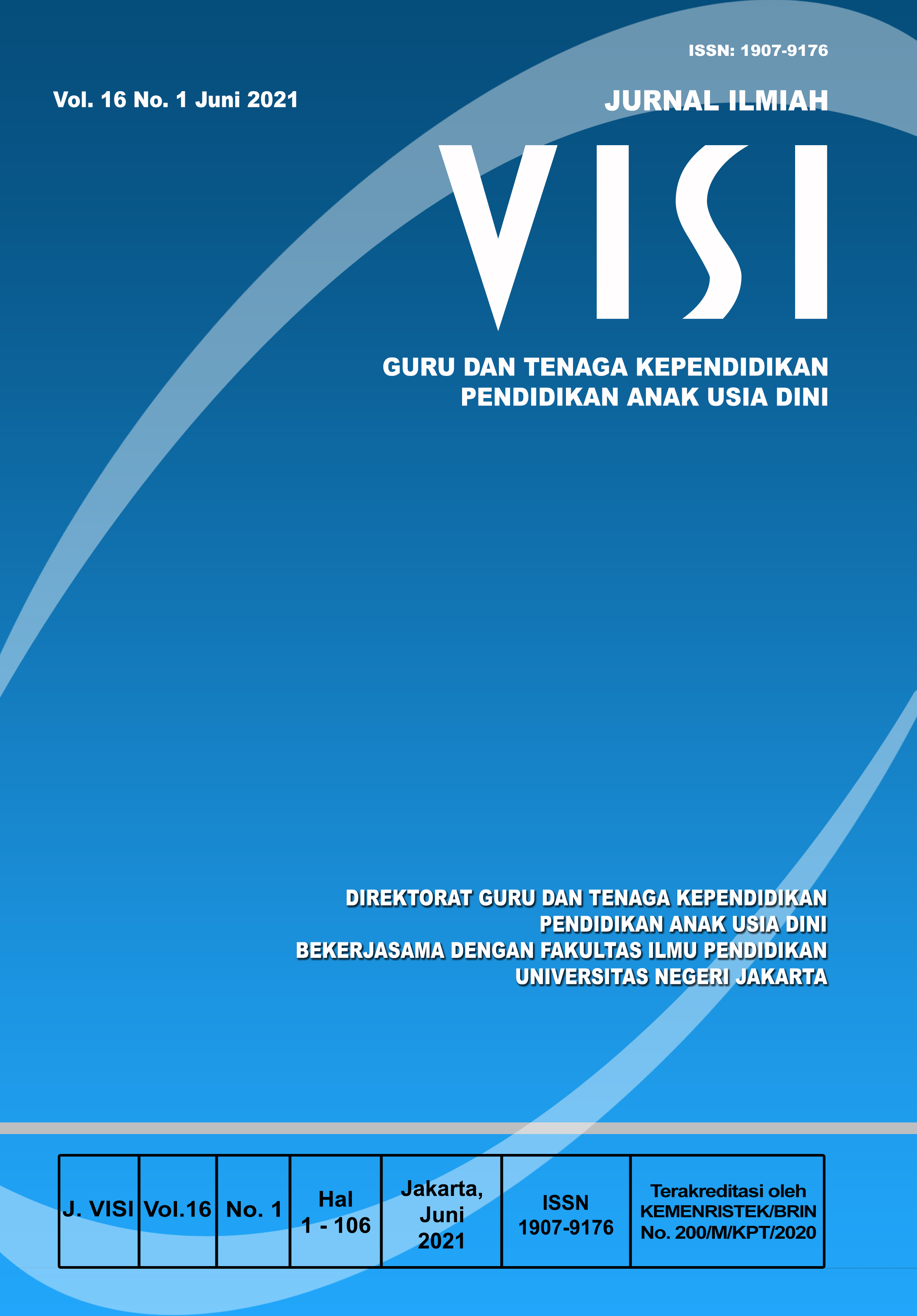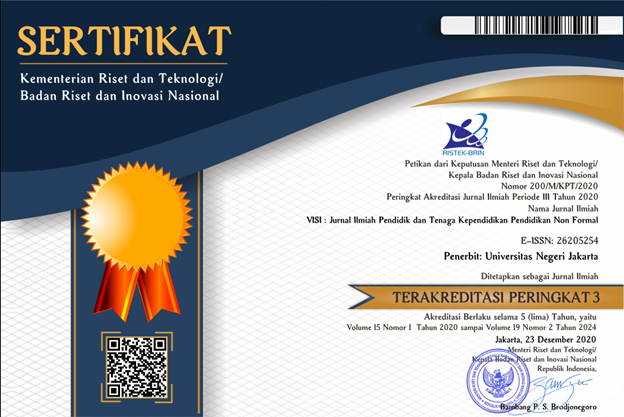PROFIL KEMAMPUAN COMPUTATIONAL THINKING ANAK USIA 5-6 TAHUN
THE PROFILE OF COMPUTATIONAL THINKING ABILITY OF CHILDREN AGED 5-6
DOI:
https://doi.org/10.21009/JIV.1601.9Keywords:
anak usia dini, comptational thinking, profil, usia 5-6 tahun, early childhood, computational thinking stimulation, the profile, children aged 5-6Abstract
Kemampuan computational thinking sudah dipertimbangkan untuk diberikan kepada anak sejak usia dini. Namun belum banyak gambaran terkait kemampuan ini. Penelitian ini bertujuan melaporkan profil kemampuan computational thinking anak usia 5-6 tahun di sebuah PAUD di Kota Surakarta. Penelitian ini merupakan penelitian kualitatif. Teknik pengumpulan data yaitu wawancara pada kepala sekolah, wakil kepala sekolah bidang kurikulum, observasi pembelajaran sebanyak 36 kali, dan dokumentasi. Teknik analisis data melalui proses penyajian data, reduksi data, dan penarikan kesimpulan. Hasil penelitian melaporkan bahwa ada delapan kemampuan computational thinking yang paling terlihat. Kemampuan tersebut adalah: 1) anak terbiasa dengan kegiatan berinstruksi; 2). anak terlatih untuk mencari solusi dari permasalahan yang dihadapi; 3) anak terbiasa mengungkapkan ide berupa gagasan, pendapat, atau karya; 4) anak mampu membagi tugas secara mandiri maupun dengan diskusi teman sebaya; 5) anak terbiasa dengan ice breaking dengan menerjemahan kode; 6) anak sudah terbiasa mengoperasikan komputer secara individu, 7) anak mengetahui fungsi dari fitur colour dan shape yang terdapat pada aplikasi power point dan paint; dan 8) anak mampu menerapkan solusi kedalam permasalahan yang sama pada kegiatan yang memiliki kemiripan dalam penyelesaian. Penelitian ini menyimpulkan bahwa kemampuan computational thinking anak berkembang secara beragam sesuai dengan tingkat intensitas pemberian stimulus.
Computational thinking skills are important for children from an early age. However, there are not many information related to this ability. This study aims to report the profile of the computational thinking ability of children aged 5-6 years in an early childhood education center in Surakarta City. This research is a qualitative approach with interviews to the headmaster and teacher, observation, and documentation as data collection methods. The data were analyzed through display, reduction, and concluding. The results of the study report that there are eight most visible computational thinking abilities. These children's abilities are 1) accustomed to instructional activities; 2). find solutions when facing some problems; 3) accustomed to expressing ideas in the form of opinions or works; 4) divide tasks independently or peer discussion; 5) familiar with ice breaking by translating codes; 6) accustomed to operating computers individually, 7) know the function of the color and shape features found in Powerpoint and paint applications; and 8) apply solutions to the same problem in activities that have similarities in completion. This study concludes that children's computational thinking abilities develop in various ways according to the intensity level of the stimulus.
Downloads
Published
How to Cite
Issue
Section
License
Authors who publish with this Journal agree to the following terms:
- Author retain copyright and grant the journal right of first publication with the work simultaneously licensed under a creative commons attribution licensethat allow others to share the work within an acknowledgement of the work’s authorship and initial publication of this journal.
- Authors are able to enter into separate, additional contractual arrangementfor the non-exclusive distribution of the journal’s published version of the work (e.g. acknowledgement of its initial publication in this journal).
- Authors are permitted and encouraged to post their work online(e.g. in institutional repositories or on their websites) prior to and during the submission process, as it can lead to productive exchanges, as well as earlier and greater citation of published works.
- Users/public use of this website will be licensed to CC BY-NC-SA Creative Commons Attribution-NonCommercial-ShareAlike 4.0 International License









